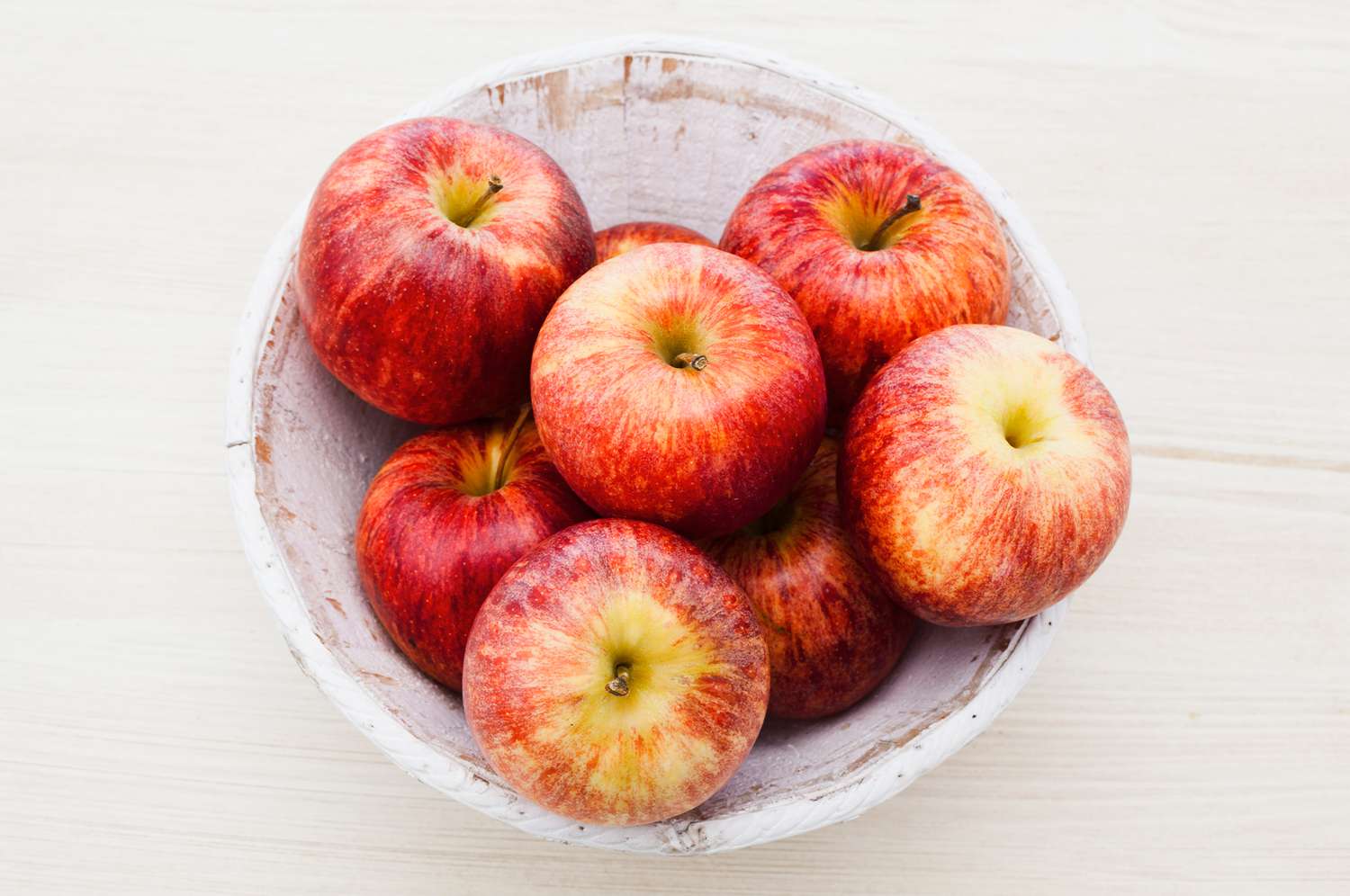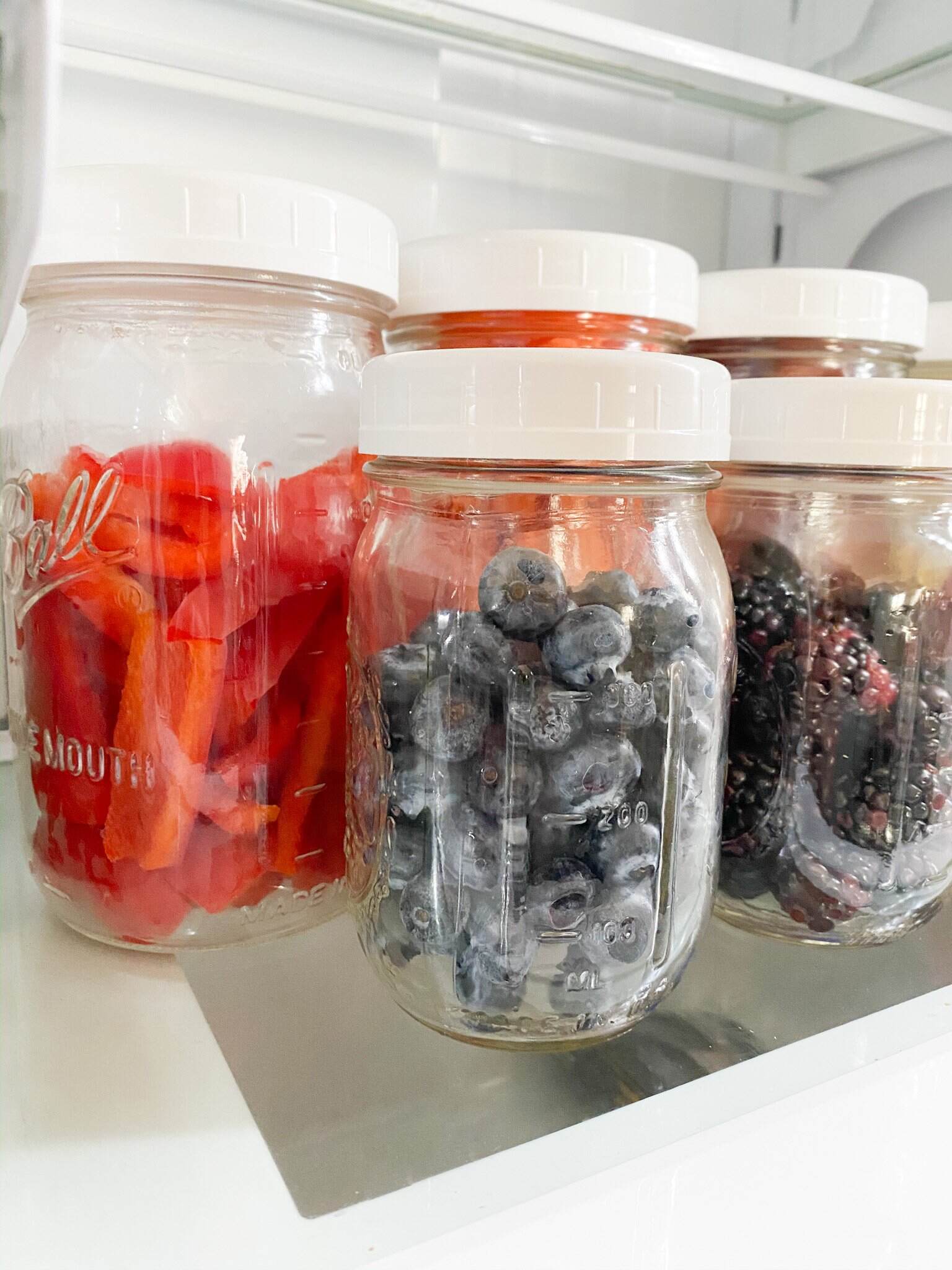

Articles
How To Store Spinach So It Lasts Longer
Modified: February 27, 2024
Discover effective techniques for storing spinach to extend its freshness and shelf life. Read our informative articles to learn how to keep your spinach fresh for longer.
(Many of the links in this article redirect to a specific reviewed product. Your purchase of these products through affiliate links helps to generate commission for Storables.com, at no extra cost. Learn more)
Introduction
Spinach is a leafy green vegetable that is not only delicious and versatile but also packed with nutritional benefits. It is rich in vitamins, minerals, and antioxidants, making it a great addition to a healthy diet. However, like many other leafy greens, spinach has a relatively short shelf life. If not stored properly, it can start to wilt, become slimy, and lose its freshness.
Properly storing spinach is essential to ensure that it stays fresh and crisp for as long as possible. Fortunately, with a few simple techniques, you can extend the shelf life of spinach and have it readily available for use in salads, smoothies, or cooked dishes. In this article, we will discuss effective methods to store spinach so that it lasts longer.
Key Takeaways:
- Properly washing and drying spinach is essential to remove dirt and moisture, extending its shelf life. Use a salad spinner or paper towels for effective drying before storage.
- When using frozen spinach, ensure proper thawing and squeeze out excess moisture. Experiment with recipes and adjust cooking times for best results.
Read more: How To Store Spinach To Last Longer
Properly Washing Spinach
Before storing spinach, it is crucial to wash it thoroughly to remove any dirt, grit, or pesticides that may be present. Here’s a step-by-step guide on how to properly wash your spinach:
- Fill a clean sink or a large bowl with cool water.
- Place the spinach leaves in the water and swish them around gently.
- Allow the spinach to sit in the water for a few minutes to allow any dirt or debris to sink to the bottom.
- Using your hands, lift the spinach out of the water and transfer it to a colander or a salad spinner.
- Rinse the spinach under running water to remove any remaining dirt or residue.
- If desired, repeat the washing process one more time to ensure the spinach is clean.
It is important not to soak the spinach for too long as extended exposure to water can lead to nutrient loss. Likewise, do not vigorously scrub the leaves, as they can bruise easily and lose their crispness.
Once the spinach has been properly washed, it is time to dry it thoroughly before storing it. Excess moisture can promote spoilage and lead to a shorter shelf life. There are a couple of methods you can use to dry your spinach leaves effectively.
Drying Spinach Leaves
After washing the spinach, it is essential to dry the leaves thoroughly to remove excess moisture before storing. Here are two effective methods to dry spinach leaves:
Using a Salad Spinner
A salad spinner is a handy kitchen tool that can quickly and efficiently remove excess water from your spinach leaves. Follow these steps to dry spinach using a salad spinner:
- Place the washed spinach leaves in the basket of the salad spinner.
- Close the lid securely and spin the basket rapidly. The centrifugal force will help remove the water from the leaves.
- Open the lid and check the spinach for any remaining moisture. If needed, spin the basket again for a few more seconds.
- Once the leaves are dry, transfer them to a clean kitchen towel or paper towel to absorb any residual moisture.
Using a salad spinner not only helps dry the spinach leaves quickly but also prevents them from bruising or getting damaged during the process.
Using Paper Towels
If you do not have a salad spinner, you can also use paper towels to dry the spinach leaves. Here’s how to do it:
- Spread a clean kitchen towel or a few layers of paper towels on a flat surface.
- Place the washed spinach leaves on top of the towel or paper towels in a single layer.
- Gently pat the spinach leaves dry with another towel or paper towel, absorbing any moisture.
- After drying, transfer the spinach leaves to a separate clean towel or container for storage.
Make sure the paper towels or kitchen towel you use are clean and absorbent to effectively remove the moisture from the spinach leaves.
Once your spinach leaves are properly washed and dried, it is time to store them to prolong their freshness and quality.
Read more: How To Store Peaches To Last Longer
Using a Salad Spinner
A salad spinner is an excellent tool for not only washing but also drying leafy greens like spinach. It uses centrifugal force to remove excess water from the leaves, leaving them dry and crisp. Here’s how to use a salad spinner to dry your spinach:
- Remove the spinner basket from the salad spinner and place the washed spinach leaves inside.
- Ensure that the spinner basket is not overcrowded to allow proper spinning.
- Place the basket back into the salad spinner and securely close the lid.
- Hold onto the handle firmly and begin spinning the basket rapidly.
- The centrifugal force will cause the water to be forced out through the basket’s small holes, leaving the spinach leaves much drier.
- Continue spinning for about 20-30 seconds or until the leaves are dry to your desired level.
- Once the spinning is complete, open the lid carefully and remove the basket from the salad spinner.
- Transfer the dry spinach leaves to a clean kitchen towel or paper towel to absorb any remaining moisture.
The salad spinner method is not only quick and effective but also prevents the spinach leaves from getting bruised or damaged during the drying process. It ensures that the leaves remain crisp and ready for storage.
Remember to clean your salad spinner thoroughly after each use to maintain its functionality and prevent any bacterial growth.
Now that your spinach leaves are dry, it’s time to move on to the next step – properly storing them to extend their shelf life.
Storing Spinach in the Refrigerator
Proper storage is crucial to keep spinach fresh and prevent it from wilting or spoiling quickly. Follow these steps to store spinach in the refrigerator:
Wrapping Spinach in Paper Towels
Start by wrapping the spinach loosely in paper towels. This helps absorb any excess moisture and prevents the leaves from becoming soggy. Avoid wrapping the spinach too tightly, as it can lead to bruising and faster deterioration.
Using a Ziploc Bag or Plastic Container
Place the wrapped spinach in a Ziploc bag or airtight plastic container. Make sure to remove as much air as possible before sealing, as oxygen can speed up the deterioration process. Alternatively, you can use a reusable produce bag or a container specifically designed for storing leafy greens.
Read more: How To Store Celery To Last Longer
Avoiding Moisture Buildup
It’s important to keep the spinach dry during storage to prevent moisture buildup, which can contribute to decay. Ensure that the container or bag is completely dry before placing the wrapped spinach inside. Additionally, avoid storing the spinach near areas in the refrigerator where condensation is likely to occur, such as the back of the refrigerator or near the vegetable drawer.
Optimal Refrigerator Temperature
Set your refrigerator temperature to approximately 35-40°F (1-4°C) to maintain the spinach’s freshness. Avoid placing the spinach near the freezer compartment or in direct contact with the cooling element, as it can freeze and damage the leaves.
Location in the Refrigerator
Store the spinach in the vegetable drawer or crisper, as it provides a slightly higher humidity environment compared to other areas of the refrigerator. This will help to preserve the spinach’s moisture content and keep it fresh for a longer duration.
Remember to check the spinach regularly for any signs of spoilage and use it within a week for optimal freshness. Using spoiled spinach can negatively impact the taste and nutritional value of your dishes.
By following these storage guidelines, you can ensure that your spinach stays fresh, crispy, and ready to use whenever you need it.
Wrapping Spinach in Paper Towels
Wrapping spinach in paper towels is a simple yet effective method to extend its shelf life and maintain its freshness. The paper towels help absorb any excess moisture from the spinach, preventing it from becoming soggy and wilting quickly. Here’s how to properly wrap spinach in paper towels for storage:
- Start by gathering a few sheets of clean, dry paper towels.
- Spread a single layer of paper towels on a clean, flat surface.
- Gently place the washed and dried spinach leaves on top of the paper towels.
- Make sure the spinach leaves are evenly spread out and not clumped together.
- Take another layer of paper towels and gently cover the spinach leaves.
- Carefully fold the edges of the paper towels over the spinach to create a loose, breathable bundle.
- Avoid pressing down too firmly as it can bruise the delicate leaves.
- If necessary, add additional layers of paper towels to absorb any excess moisture.
It’s important to note that the paper towels should not be damp or wet when wrapping the spinach. Ensure that the paper towels are clean, dry, and absorbent to effectively absorb moisture without transferring any unwanted moisture back to the spinach leaves.
Once the spinach is wrapped in paper towels, you can proceed to store it in an airtight container or Ziploc bag to further protect it from moisture and deterioration.
Remember to check the spinach regularly for any signs of spoilage, such as discoloration or a slimy texture. If you notice any spoilage, remove the affected leaves to prevent it from spreading to the rest of the spinach.
Properly wrapping spinach in paper towels helps to maintain its crispness and freshness for a longer period, allowing you to enjoy this healthy and versatile leafy green in a variety of dishes.
Read more: How To Store Batteries To Last Longer
Using a Ziploc Bag or Plastic Container
Once you have wrapped your spinach in paper towels, the next step is to store it in a suitable container to maintain its freshness. Using a Ziploc bag or airtight plastic container is a convenient and effective method for storing spinach. Here’s how to do it:
Ziploc Bag Method:
- Place the wrapped spinach bundle inside a large Ziploc bag.
- Ensure the Ziploc bag is sealed tightly to prevent air from entering.
- Press down gently on the bag to remove any excess air before sealing.
- Label the bag with the date of storage to keep track of its freshness.
- Store the Ziploc bag in the refrigerator in the designated vegetable drawer or crisper.
The Ziploc bag creates an airtight environment, protecting the spinach from exposure to oxygen and moisture, which can cause it to deteriorate more quickly.
Plastic Container Method:
- If using a plastic container, choose one that is specifically designed for storing leafy greens or has an airtight seal.
- Place the wrapped spinach inside the container, ensuring that it fits comfortably without being too tightly packed.
- Seal the container tightly to prevent air from entering.
- Label the container with the date of storage.
- Store the container in the refrigerator vegetable drawer or crisper, away from areas with fluctuating temperatures.
Using a plastic container with an airtight seal provides an extra layer of protection against moisture and air, maintaining the freshness of the spinach for a longer period.
Remember to avoid storing the spinach near fruits or vegetables that produce ethylene gas, such as apples and bananas, as it can accelerate the spinach’s deterioration. Keeping the spinach in a separate compartment or container helps to maintain its quality.
By using a Ziploc bag or plastic container, you can prolong the shelf life of your spinach, ensuring that it remains fresh, vibrant, and ready to be incorporated into your favorite recipes.
Avoiding Moisture Buildup
Properly storing spinach involves keeping it dry to prevent moisture buildup, which can lead to microbial growth and spoilage. Here are some important tips to avoid moisture buildup when storing spinach:
Dry the Spinach Thoroughly:
Before storing spinach, ensure that it is completely dry. Use a salad spinner or paper towels to remove excess moisture from the leaves. Any lingering water droplets can accelerate the decay process and cause the spinach to become slimy.
Use Dry Storage Containers:
Ensure that the containers or bags you use to store the spinach are clean and dry. Moisture on the container walls can transfer back to the spinach leaves, leading to increased humidity levels and promoting spoilage. Wipe the containers or bags dry before placing the spinach inside.
Absorb Excess Moisture:
If you notice any moisture accumulation within the storage container, remove the spinach and dry the container thoroughly. You can also add a fresh layer of dry paper towels to absorb excess moisture. Changing the paper towels periodically can help maintain a dry environment for the spinach.
Avoid Washing Spinach Before Storage:
It’s best to wash spinach right before use rather than before storing it. Moisture from washing can make the leaves more susceptible to decay. By keeping the spinach unwashed until needed, you can minimize moisture exposure and extend its shelf life.
Read more: How To Store Bananas To Last Longer
Keep Refrigerator Humidity in Check:
High humidity levels in the refrigerator can promote moisture buildup. Ensure that your refrigerator is set to the optimal humidity range of 85-95%. This range helps maintain the freshness of the spinach without causing excess condensation.
Do Not Overstuff the Storage Container:
Avoid overcrowding the storage container or bag, as it can restrict airflow and trap moisture. Make sure there is enough space for the spinach leaves to breathe and prevent them from getting compressed.
By following these guidelines and being mindful of moisture buildup, you can extend the shelf life of your spinach and keep it fresh and crisp for a longer period.
Checking for Spoilage
Regularly checking your stored spinach for signs of spoilage is crucial to ensure that you are consuming fresh and safe produce. Here are some key indicators to look out for when checking for spoilage:
Discoloration:
Inspect the spinach leaves for any browning, yellowing, or dark spots. Discoloration is often an indication of decay and should be discarded to prevent the spread of spoilage to the rest of the leaves.
Read more: How To Store Tomatoes To Last Longer
Slime or Sliminess:
If you notice a slimy or sticky texture on the spinach leaves, it is a clear sign that spoilage has occurred. Sliminess is caused by bacteria or fungi growth, and the spinach should be discarded immediately.
Mold Growth:
Examine the spinach leaves for any signs of mold, which can appear as fuzzy patches or discoloration. Mold growth indicates spoilage and potential health risks if consumed. It is important to discard any spinach with mold promptly.
Unpleasant Odor:
Smell the spinach to detect any unusual or foul odors. Fresh spinach should have a mild and earthy scent. If a strong, unpleasant odor is present, it indicates bacterial or fungal growth and the spinach should be discarded.
Texture and Wilted Leaves:
The texture of fresh spinach leaves should be crisp and firm. If the leaves feel limp, wilted, or mushy, it suggests that the spinach is past its prime and should not be consumed.
Read more: How To Store Berries To Last Longer
Check Storage Container or Bag:
Inspect the storage container or bag for any signs of moisture buildup or condensation. Excessive moisture can lead to faster spoilage of the spinach leaves.
Remember, it’s always better to be cautious and discard any spinach that shows signs of spoilage. Consuming spoiled spinach can lead to foodborne illness and should be avoided.
By regularly checking for spoilage and removing any contaminated leaves, you can ensure that the remaining spinach stays fresh and safe for consumption.
Tips for Using Frozen Spinach
Frozen spinach is a convenient option that allows you to enjoy the nutritional benefits of spinach even when fresh supplies are limited. Here are some tips on how to make the most out of frozen spinach:
Thawing Frozen Spinach:
Before using frozen spinach, it needs to be thawed properly. There are a few methods you can use:
- Refrigerator Thawing: Place the frozen spinach in the refrigerator overnight or for a few hours until it is fully thawed.
- Microwave Thawing: Use the defrost setting on your microwave to thaw the spinach. Follow the manufacturer’s instructions for thawing times.
- Cooking Straight from Frozen: If you’re in a hurry, you can also cook frozen spinach directly without thawing. Keep in mind that this method may result in excess moisture in your dishes.
Squeezing Out Excess Moisture:
Frozen spinach tends to retain more water compared to fresh spinach. After thawing, make sure to squeeze out the excess moisture by placing the thawed spinach in a clean kitchen towel and firmly squeezing until the liquid is extracted. This step will prevent your dish from becoming watery and improve the overall texture and flavor.
Read more: How To Store Blueberries To Last Longer
Experiment with Recipes:
Frozen spinach can be used in various recipes, such as smoothies, soups, stews, casseroles, and pasta dishes. Feel free to experiment and find new ways to incorporate it into your meals. It adds a nutritious boost and imparts a pleasant earthy flavor to your dishes.
Adjusting Cooking Times:
When using frozen spinach in recipes, be mindful of cooking times. Frozen spinach requires less cooking time compared to fresh spinach since it has already been blanched during the freezing process. Adjust the recipe accordingly to prevent overcooking the spinach.
Combining with Other Ingredients:
Frozen spinach works well with a variety of other ingredients. Consider adding it to dishes with tomatoes, garlic, onions, spices, and herbs to enhance the flavors. It is also a great addition to dishes that incorporate cheese or creamy sauces.
Freezing Leftovers:
If you have any leftover cooked spinach, you can freeze it for future use. Allow it to cool completely, then transfer it to airtight containers or freezer bags and store in the freezer. Frozen leftovers can be used for quick and easy meals, such as quiches, omelets, or as a side dish.
By following these tips, you can make the most of your frozen spinach and enjoy its nutritional benefits in a variety of delicious recipes. Frozen spinach is a convenient pantry staple that can contribute to a healthy and balanced diet year-round.
Read more: How To Store Avocados To Last Longer
Conclusion
Properly storing spinach is essential to maintain its freshness, flavor, and nutritional value. By following the techniques outlined in this article, you can extend the shelf life of spinach and ensure that it remains vibrant, crisp, and ready to use.
First, properly washing and drying spinach is crucial to remove dirt, grit, and excess moisture. Use a salad spinner or paper towels to dry the leaves thoroughly before moving on to the storage process.
When storing spinach in the refrigerator, wrap it in paper towels to absorb any remaining moisture. Then, place the wrapped spinach in a Ziploc bag or airtight container to prevent moisture buildup and exposure to air. Avoid storing it near ethylene-producing fruits or vegetables.
Regularly check the spinach for signs of spoilage like discoloration, sliminess, mold growth, or unpleasant odor. Maintaining a dry environment and removing any spoiled leaves helps extend the shelf life of the remaining spinach.
If you’re using frozen spinach, ensure it is properly thawed before use and squeeze out the excess moisture. Experiment with a variety of recipes, adjusting cooking times accordingly. Frozen spinach can be a versatile addition to various dishes.
In conclusion, with the proper washing, drying, and storage techniques, you can maximize the shelf life of spinach and enjoy its nutritional benefits for a longer period. By incorporating these practices into your routine, you can make the most out of this leafy green vegetable and enhance your culinary experiences.
Frequently Asked Questions about How To Store Spinach So It Lasts Longer
Was this page helpful?
At Storables.com, we guarantee accurate and reliable information. Our content, validated by Expert Board Contributors, is crafted following stringent Editorial Policies. We're committed to providing you with well-researched, expert-backed insights for all your informational needs.







0 thoughts on “How To Store Spinach So It Lasts Longer”